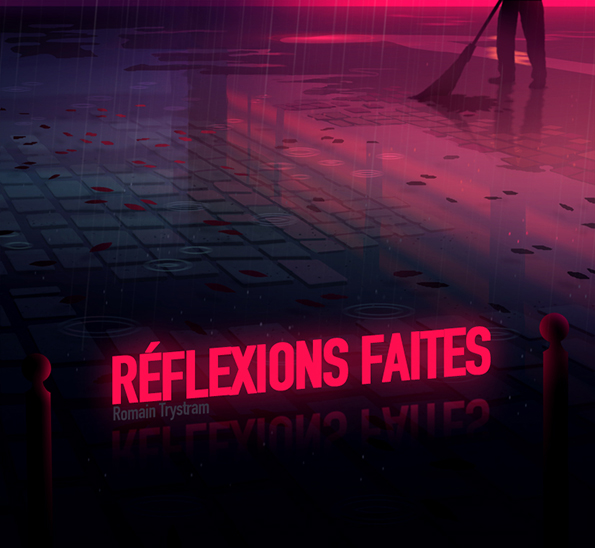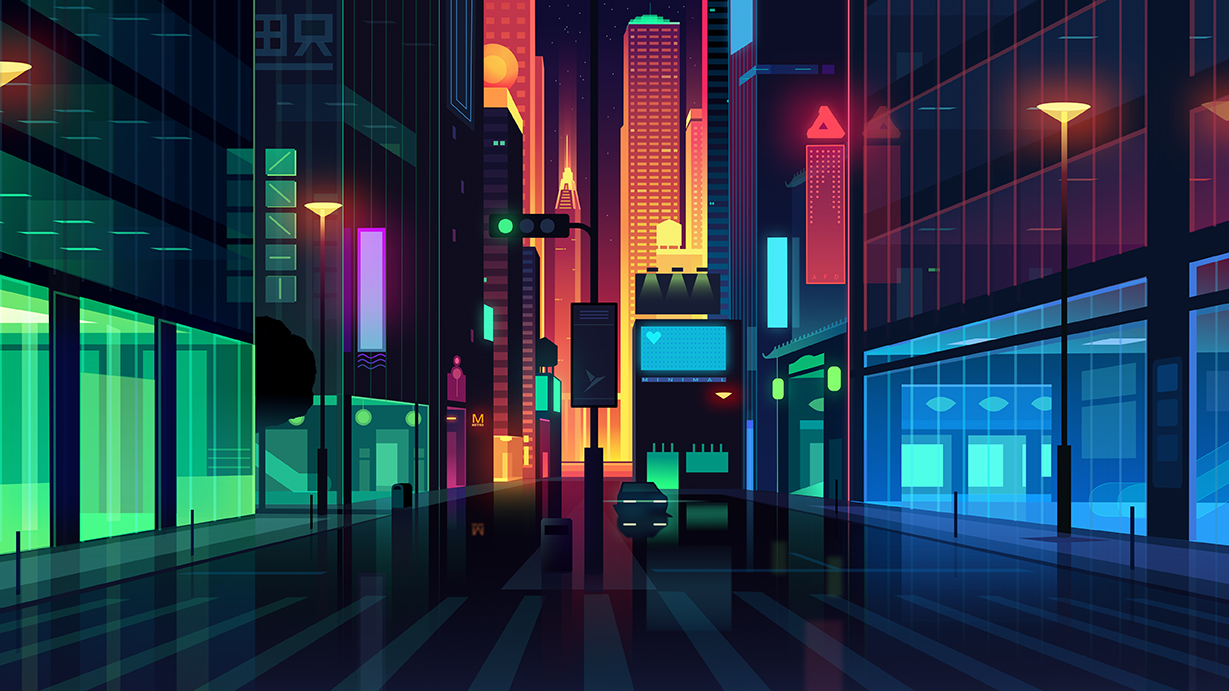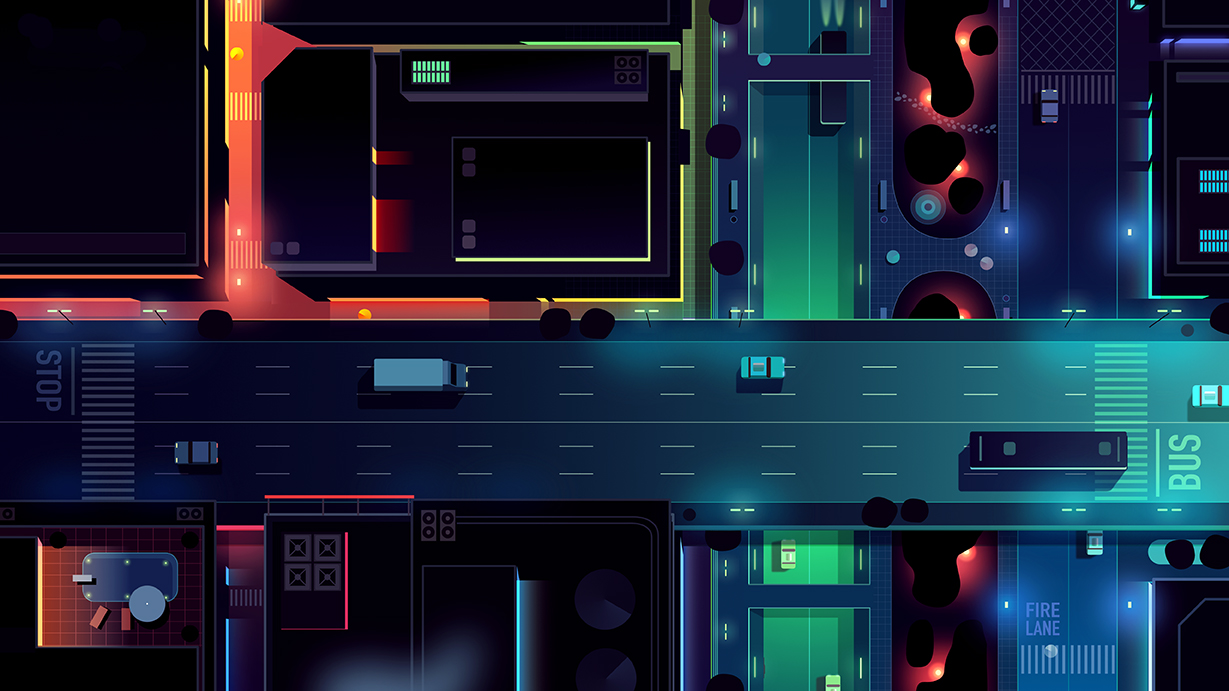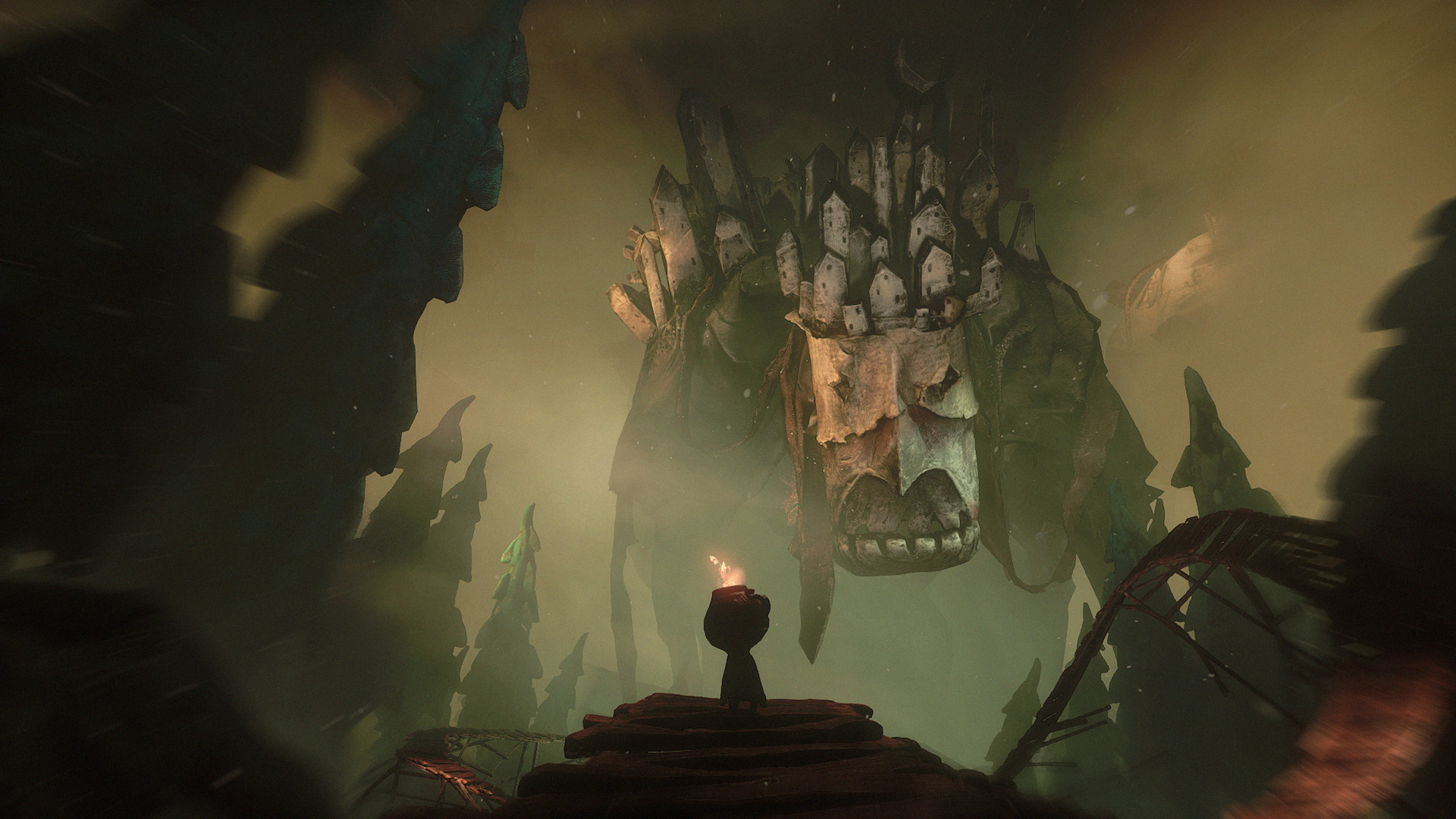Creating dramatic colour and light effects in Affinity Designer
Parisian illustrator Romain Trystram speaks about how he gets his unique style using powerful vector tool Affinity Designer.

As well as developing award-winning apps for creative professionals, Affinity is always looking for illustrators and photographers to work with. Here we dig deeper into the work of one of our recent commissioned illustrators, Romain Trystram.
Romain’s use of rain-drenched colour and dramatic light looks so sumptuous on our 5k screens we wanted to see what he could do with Affinity Designer. We asked Romain to create a series of illustrations in Affinity Designer, one of which is currently featured on our home page. Six months on we’re catching up with Romain to find out more about him and how he found working in his new design app.
How did you start out in illustration?
I gained a degree in graphic design and after that I worked in the animation industry as an Art Director and Colourist for seven years, and was a Colourist for several comic books at the same time too. After that I really wanted to try to do more personal projects and develop my techniques some more because in that regard I felt I was still very limited. I wanted to be free to work in a way that pleased me, with my own rhythm, and working as freelance illustrator seemed to be the best way to reach that goal.
Did you always want to be an illustrator?
Not really, no, at the beginning I wanted to work as background artist for animated movies, but after working for a studio I realised I didn’t have any freedom. So that’s why I set out on the path to become a freelance illustrator.
Where do you start with the design process?
I think inspiration is often based on culture; when somebody delivers a brief, it’s your culture and background that frames your ability to explore references. It’s then that you can research and explore the possibilities, when you know the context. It’s an important thing to remember because there are so many tools available to designers today, but it’s the context, the reason for the exploration that matters. Personally, I am searching a motivation beyond inspiration, something of the desire to make the first step and start to build and play. Cultural references are very important in this.

Your work is very recognisable – how do you approach light and colour in your illustrations?
I always try to develop a system more than just a picture, using shapes and colours to give the illusion of lighting. I always try to give to shapes a function and to eliminate all the stuff that has no function. I build all my systems on that principle. Regarding the technical aspects, I just use a combination of basic techniques to make more complex pictures.
You have worked for some big brands like Panasonic, Virgin Atlantic and Wired UK. What’s been your favourite commission to date?
When I started out as an illustrator I was commissioned to produce 12 architecture illustrations as downloadable wallpapers for I Like Architecture. That was a great project because it was the first to give me the opportunity to do my own thing – so they weren't the biggest client I worked with by any means, but they helped me make my first steps as an independent illustrator and that makes it a favourite.
Does your creative process differ between client commissions and your own artwork?
Technically I work exactly the same way, but when I do personal projects I try to build my own playground. This is why I love to work on extended series of pieces, it makes my relation with time very different. I try to take this time to think more, to think about how to create new and better elements in my graphic systems.

I try to go out of my comfort zone too, because when you are commissioned to produce work it’s often doing what you’re used to, what you’re known for. So I think it’s really important to try something else because if you don’t try to make something different you can’t learn anymore.
What’s been the most successful artwork you have made for yourself?
I think it’s a series rather than one piece. It’s the series called 'Réflexions Faites' (Second Thoughts), my first series and the first project that raised my profile. I learned a lot from working through that.
Our favourite of your Affinity Designer pieces is ‘Neon Alleyway’. Which one did you feel was the most successful and why?

This one was the last I worked on in the series and it’s when I had become most fluent with the new software. Having more practice by this point meant I could focus on ideas not the ins and outs of using the tools; the creative flow was really smooth for this.
All three commissioned prices are incredibly detailed – how long did it take you to complete each one?
It maybe took me a little longer than usual while I was getting used to using new software, it’s tough to nail down exactly how long they took, I’d say an average of three days each. I never usually work on multiple projects, I much prefer to focus, to try to fully understand what the client wants and develop the appropriate design response.

Are there references and motifs that you return to in your work?
References, yes of course, I was particularly influenced by the work of my grandfather, Roger Trystram, who was a painter and a great colourist. I watched him worked at home in his house, painting all day everyday. I definitely use my memories of him as both an influence and a reference.
Since then I have discovered the work of so many people and have been amazed by Japanese illustrator Tadahiro Uesugi. His work is fantastic, he has an incredible sense of lighting and composition. I also love the work of Kazuo Oga, a background Art Director at Studio Ghibli. Plus Jon Klassen and many others, more than I can name.
What are your thoughts about Affinity Designer as a tool for your illustration work?
Before accepting this commission I had never worked with vector software before! But I was intrigued, I wanted to give it a go, and when I watched the Affinity Designer demo video I decided to say yes. It’s very intuitive software. For 13 years I’d only worked with Photoshop so I was afraid of not knowing my way with something else. But this is not the case, which was a surprise honestly.
Layers working like groups took some getting used to, I had a different method before but finally I changed my habits and now I really like it! I’ve worked on other professional projects with Affinity Designer and I am very happy because I haven’t had to spend a lot of time adapting my technique or style.
The price is also a very important aspect because it’s accessible to everyone and yet it doesn’t compromise, it’s a professional tool.
It’s been a pleasure – any closing thoughts?
I would say thank you very much to the team for choosing me and my artwork to be featured on the main Affinity page, and congratulations to the dev team who made this great tool!
See more of Romain Trystram’s work on his website romaintrystram.myportfolio.com and on his Behance profile at behance.net/laylow.
Affinity Designer is now available for Windows
Try Affinity Designer for Mac free for 10 days by downloading a trial from affinity.serif.com/designer or head straight to the Mac App Store to buy outright for the low price of £39.99/€49.99/$49.99.
The 5-star rated, Apple Design Award winning, Editors’ Choice Affinity Designer is also coming to Windows! Sign up for the free beta at affinity.serif.com/windows.

Thank you for reading 5 articles this month* Join now for unlimited access
Enjoy your first month for just £1 / $1 / €1
*Read 5 free articles per month without a subscription

Join now for unlimited access
Try first month for just £1 / $1 / €1
Daily design news, reviews, how-tos and more, as picked by the editors.

The Creative Bloq team is made up of a group of art and design enthusiasts, and has changed and evolved since Creative Bloq began back in 2012. The current website team consists of eight full-time members of staff: Editor Georgia Coggan, Deputy Editor Rosie Hilder, Ecommerce Editor Beren Neale, Senior News Editor Daniel Piper, Editor, Digital Art and 3D Ian Dean, Tech Reviews Editor Erlingur Einarsson, Ecommerce Writer Beth Nicholls and Staff Writer Natalie Fear, as well as a roster of freelancers from around the world. The ImagineFX magazine team also pitch in, ensuring that content from leading digital art publication ImagineFX is represented on Creative Bloq.
